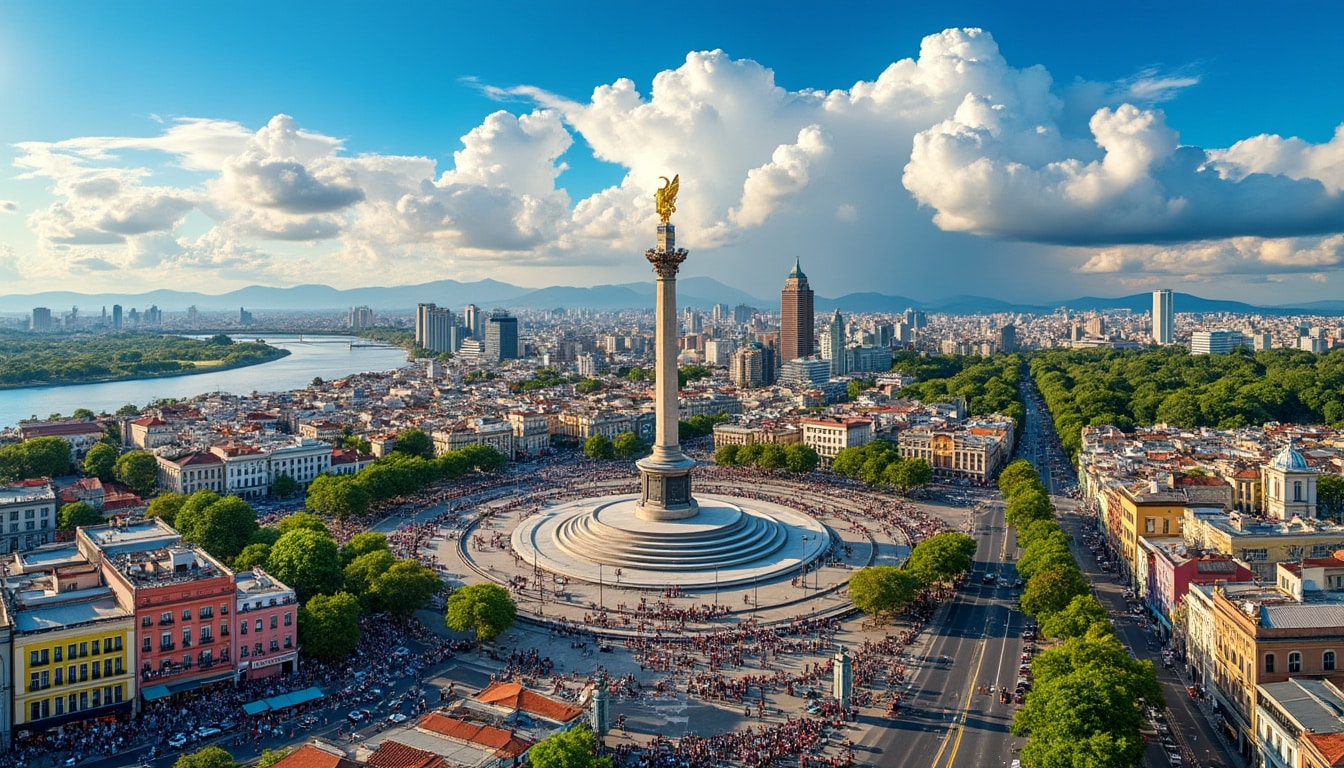Buenos Aires, a city pulsating with energy, stands as one of the most influential urban landscapes in Latin America. Known for its captivating blend of European flair and Latin American warmth, Buenos Aires is rich in cultural diversity and historical significance. As the capital of Argentina, it not only serves as a political and economic hub but also as a beacon of culture, with its famous tango, delectable empanadas, and world-renowned Malbec wine. The city’s geography, nestled on the shores of the Río de la Plata, offers a patchwork of vibrant neighborhoods each with its distinct character, from the colorful facades of La Boca to the elegant avenues of Recoleta. In this exploration, we delve into the intricate fabric of Buenos Aires, unraveling its demographics, geographic layout, and cultural tapestry that continues to enchant both residents and visitors alike.
The Strategic Geography of Buenos Aires
The strategic location of Buenos Aires has long positioned it as a significant center in Argentina and beyond. Located on the northeastern edge of the fertile Pampas and extending as a port on the Río de la Plata, Buenos Aires serves as a key point of entry and exit for goods and people. This geographical advantage has facilitated its growth as a major economic and cultural center while influencing its demographic trends.
Occupying an area of approximately 78 square miles (203 square kilometers), the city itself is smaller in comparison to other major global cities, yet its influence is monumental. When considered with Greater Buenos Aires, which spans about 1,500 square miles (3,885 square kilometers), the metropolitan area encapsulates a bustling population making it an Alpha− global city according to the GaWC 2024 ranking.
The cityscape of Buenos Aires is shaped by its position at the mouth of the Paraná River delta, bordered in the east and north by the Río de la Plata. This proximity to waterways has been a significant factor in its development as one of Latin America’s most important ports, fostering trade and cultural exchange. The landscape is predominantly flat, with the center of the city perched on a bluff offering a vantage over the water.
- 🌍 Flat terrain ideal for urban expansion
- 🏞️ Proximity to water provides commercial benefits
- 🚢 Highly accessible via port
- 🌳 Contains lush green spaces and parks
Buenos Aires’ landscape is punctuated by small rivers such as the Riachuelo, which flow into the Río de la Plata, defining its southern periphery. The city’s layout exhibits the ordered precision of a grid, a legacy from its colonial past, enabling easy navigation through its bustling streets and vibrant neighborhoods.
Understanding the geography of Buenos Aires provides insight not only into its economic success but also into its challenges, such as urban sprawl and environmental concerns. As Buenos Aires continues to grow, balancing development with sustainable practices remains paramount. The relation between its landscape and urban planning reflects the city’s identity, one that must navigate both its historical roots and future aspirations.
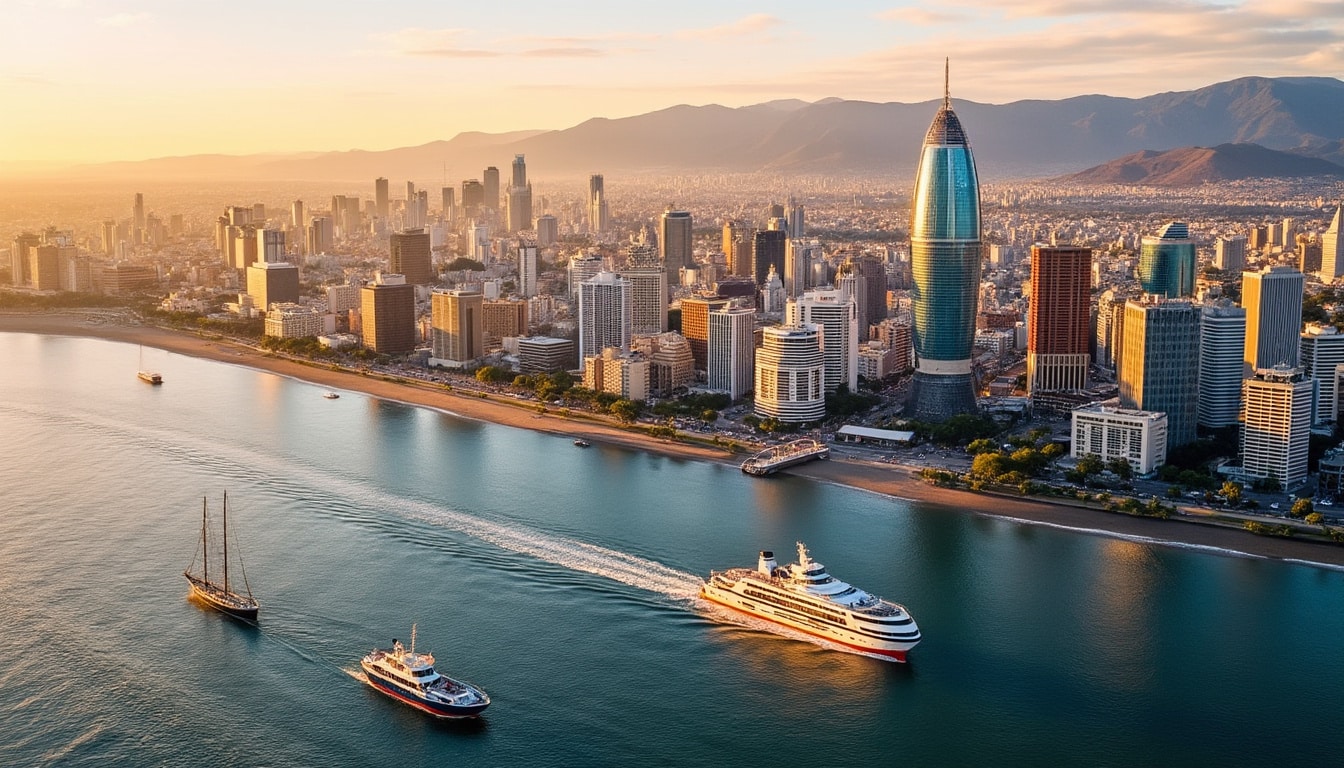
Demographic Dynamics of Buenos Aires
Buenos Aires is not just a city—it’s a living organism constantly evolving through the dynamic interplay of its diverse population. As of 2025, the city proper houses approximately 3.1 million residents, while the expansive Greater Buenos Aires is home to over 17.5 million people. This makes it one of the most densely populated urban centers in Latin America.
Strongly characterized by its demographic diversity, Buenos Aires is a melting pot where different cultures blend harmoniously. The term “Porteño” describes the city’s inhabitants, a nod to the city’s history as a port city that welcomed immigrants from all over the world. This legacy of migration is evident in the cultural diversity that defines Buenos Aires, enriching its cultural scene with traditions from Europe, the Middle East, and Asia.
- 🌎 High population density within city limits
- 🌍 Influenced by waves of immigration
- 🎨 Rich mix of cultural influences
- 📈 Continual population growth and urbanization
Age distribution in Buenos Aires highlights youthful vibrancy with a considerable segment under the age of 30, contributing to a dynamic work environment and cultural scene. The city’s demographic composition is a microcosm of Argentina’s history of immigration and integration, where traditions are shared and new ones are forged.
The socioeconomic tapestry of Buenos Aires is as varied as its cultural one. Economic disparities, however, exist within its boundaries, reflecting some of Argentina’s broader challenges. Efforts are ongoing to bridge these gaps, facilitating inclusive growth and enhancing quality of life across the city.
Cultural Tapestry: The Heartbeat of Buenos Aires
The vibrant culture of Buenos Aires is an irresistible mosaic of traditions and innovation. The city is synonymous with tango, the passionate dance and music form that originated here and has since become a global cultural phenomenon. Visitors to Buenos Aires can immerse themselves in the rhythms of tango in the historic neighborhood of San Telmo, where cobbled streets host impromptu dance performances.
Buenos Aires’ cultural offerings extend beyond tango. The city is a hub for arts and entertainment, hosting numerous art galleries, theaters, and cultural festivals throughout the year. The Recoleta neighborhood is famed for its European architecture and the iconic Recoleta Cemetery, which houses the graves of many notable Argentines, including Eva Perón.
- 💃 Tango: Iconic cultural expression originating in Buenos Aires
- 🎭 Theaters: Vibrant performing arts scene
- 🖼️ Art: Numerous galleries and exhibitions
- 📚 Literature: Legendary for its literary heritage
In Buenos Aires, traditional and contemporary blend seamlessly. Festivals such as Carnaval Porteño and BA Semana del Arte showcase the city’s commitment to preserving its cultural heritage while also embracing contemporary trends. The city’s cultural venues serve as meeting points for its diverse population, fostering community through shared experiences.
Food is a significant aspect of Buenos Aires’ cultural fabric. The city’s culinary scene is renowned, particularly for dishes like empanadas and asado, an Argentine barbecue tradition. Accompanied by a glass of local Malbec, dining in Buenos Aires is a testament to the city’s rich cultural diversity and its penchant for celebration.
The Economic and Political Landscape of Buenos Aires
Buenos Aires stands as Argentina’s capital, a major political seat, and a significant driver of the national economy. The city contributes a substantial portion to the country’s GDP, with its robust sectors including finance, commerce, and technology. As the heart of Argentina’s political life, it hosts the national government and numerous foreign embassies, underscoring its international significance.
The city’s economy benefits greatly from its role as a major port. The Port of Buenos Aires is a critical point for exports and imports, enhancing the city’s status as a commercial hub. The city also houses several multinational corporations, financial institutions, and startups, fostering an environment ripe for innovation and commerce.
- 💼 Major hub for financial and corporate activities
- 📊 Key contributor to Argentina’s GDP
- ⚖️ Political epicenter with national governmental institutions
- 🚀 Growing technology and startup scene
Politically, Buenos Aires plays a crucial role. As the federal capital, it is a focal point for political discourse and policymaking. The city’s influence extends across national and international spheres, with its leaders playing pivotal roles in regional politics.
Economic disparity is, however, a challenge that Buenos Aires faces, an issue reflective of broader national trends. While the city thrives at the forefront of economic prosperity, it must address underlying social inequalities to ensure sustainable and inclusive growth.
Architectural Narratives: Stories Woven in Stone
The architecture of Buenos Aires is a testament to its rich history and cultural influences. From the colorful streets of La Boca with its vibrant houses to the neoclassical grandeur of government buildings, Buenos Aires is a city where every façade tells a story. This architectural diversity is a legacy of the waves of European immigrants who left their mark on the city’s skyline.
In neighborhoods like Recoleta and Palermo, one can find grand avenues lined with French-inspired buildings, showcasing the city’s aspirations towards European elegance. Here, architecture narrates the tale of Buenos Aires’ ambition and growth, its buildings standing as symbols of eras gone by.
- 🏛️ Neoclassical: Characterizes many government buildings
- 🏢 Modernist: Reflects Buenos Aires’ 20th-century growth
- 🎨 Art Nouveau and Art Deco influences
- 🏡 Distinctive residential styles in various neighborhoods
The historic core and the eclectic architecture of Buenos Aires not only highlight its cultural depth but also offer insights into its socio-economic complexities. Preservation efforts are underway to protect these treasures, ensuring they remain a part of the city’s lively heritage.
Contemporary developments are now starting to integrate sustainable designs, responding to the need for eco-friendly urban growth in the 21st century. Buenos Aires’ architecture thus continues to evolve, mirroring the dynamic nature of the city itself.
FAQ
- Where is Buenos Aires located? Buenos Aires is located on the western shore of the Río de la Plata, in northeastern Argentina.
- What is Buenos Aires’ population in 2025? The city has a population of approximately 3.1 million, while Greater Buenos Aires holds around 17.5 million residents.
- Why is Buenos Aires significant? Buenos Aires is a major cultural, political, and economic center in Argentina and Latin America, known for its rich history and vibrant culture.

Fun Facts & Curiosities About Buenos Aires
Buenos Aires, the heart and soul of Argentina, is not just a city, but an experience. Known for its vibrant culture, architectural marvels, and passionate tango, Buenos Aires offers surprising facts and curiosities that even frequent visitors may find fascinating.…
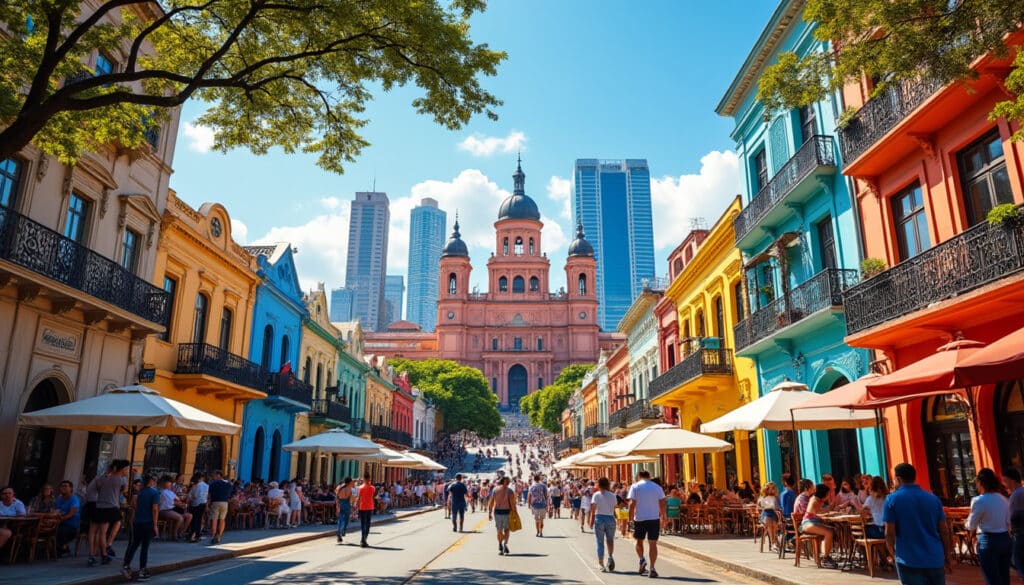
Architecture and urban features of Buenos Aires
Buenos Aires is renowned for its captivating architectural diversity, a melting pot of styles that reflect its rich cultural heritage. Known as both “The queen of the Río de la Plata” and “Latin America’s Paris,” the city’s landscape is a…
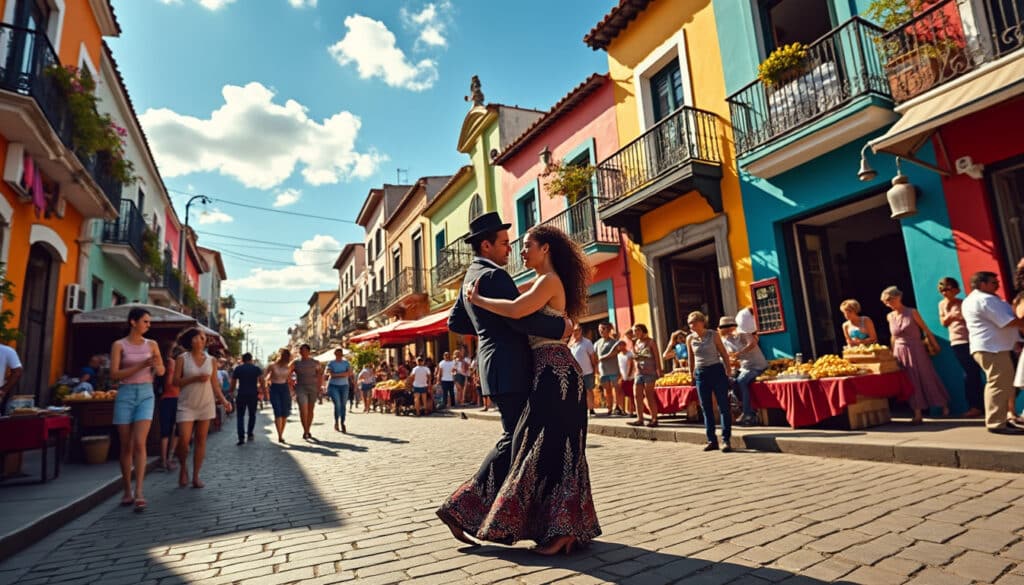
Basic facts about Buenos Aires
Buenos Aires, the vibrant capital of Argentina, is a city of inspiring contrasts and bustling energy. Famous for its rich cultural heritage and dynamic street life, it attracts travelers from all over the world. With its European flair and Latin…
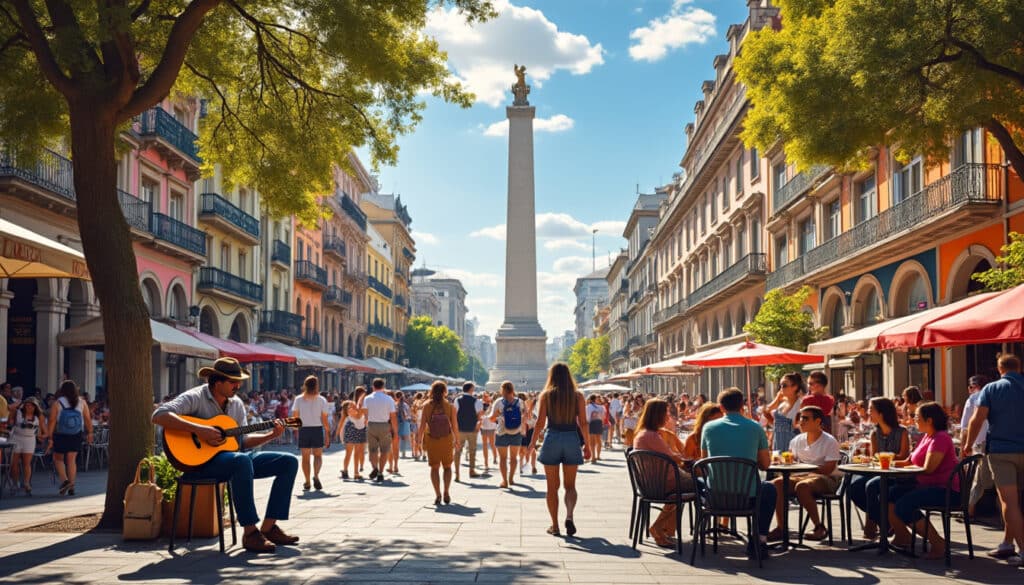
Often referred to as the “Paris of South America,” Buenos Aires blends European elegance with Latin American passion, creating a vibrant tapestry of culture and daily life that intrigues many. As the capital city of Argentina, it’s a place where…
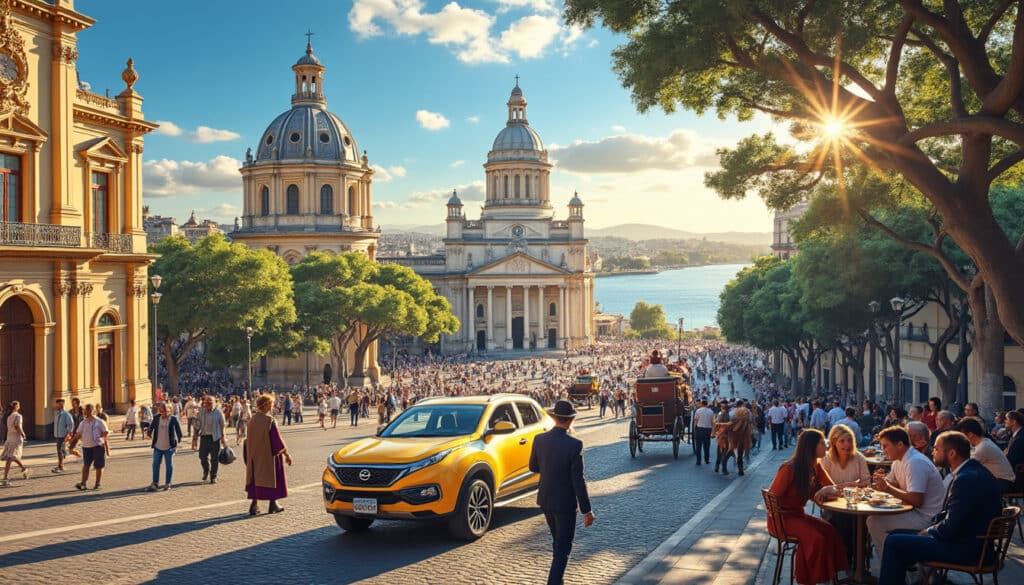
Buenos Aires, often regarded as the “Paris of South America”, carries a rich tapestry of history woven through its vibrant streets and iconic landmarks. From its roots as a colonial outpost to its current status as a bustling metropolis, Buenos…
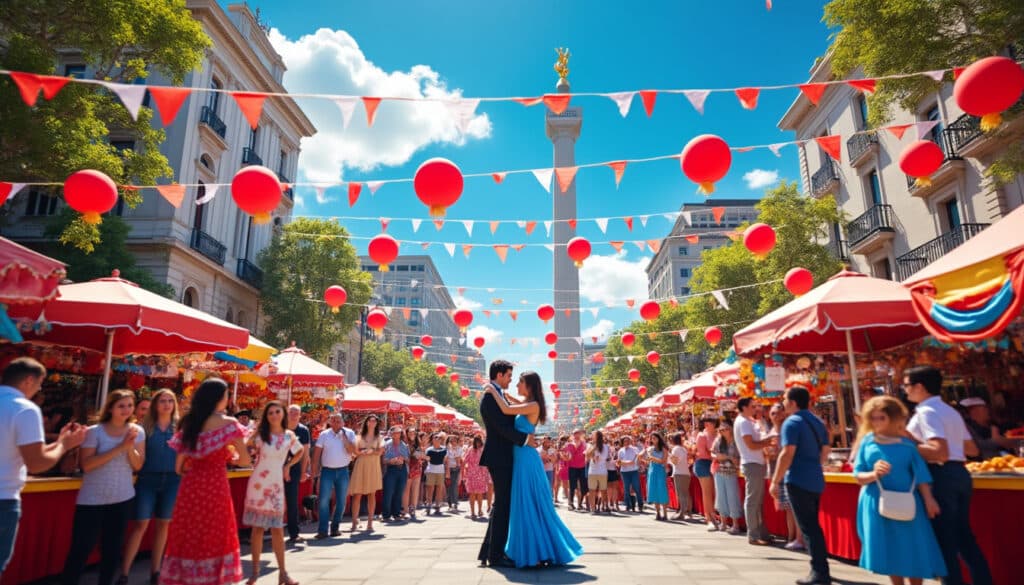
Holidays and celebrations in Buenos Aires
Buenos Aires, the enchanting capital of Argentina, is a city that thrives on celebrations, cultural diversity, and vibrant festivals. Its festive calendar is brimming with events that capture the essence of its rich history and multifaceted identity. From the iconic…

Language and spelling of Buenos Aires
Buenos Aires, often celebrated as the “Paris of South America,” stands as the vibrant capital of Argentina, rich in cultural diversity and linguistic variety. Known for its dynamic blend of European elegance and Latin American flair, Buenos Aires captivates millions…
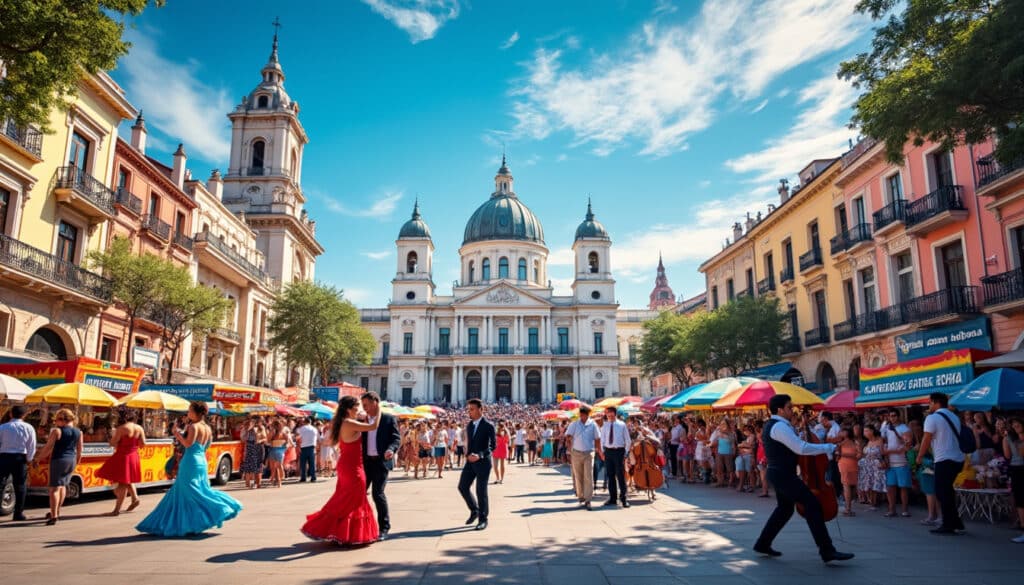
Local tips for tourists in Buenos Aires
Embark on an unforgettable journey through the vibrant streets of Buenos Aires, a city that seamlessly blends rich history with modern charm. For tourists visiting Buenos Aires, these insider tips will help you navigate the city’s hidden gems, culinary adventures,…
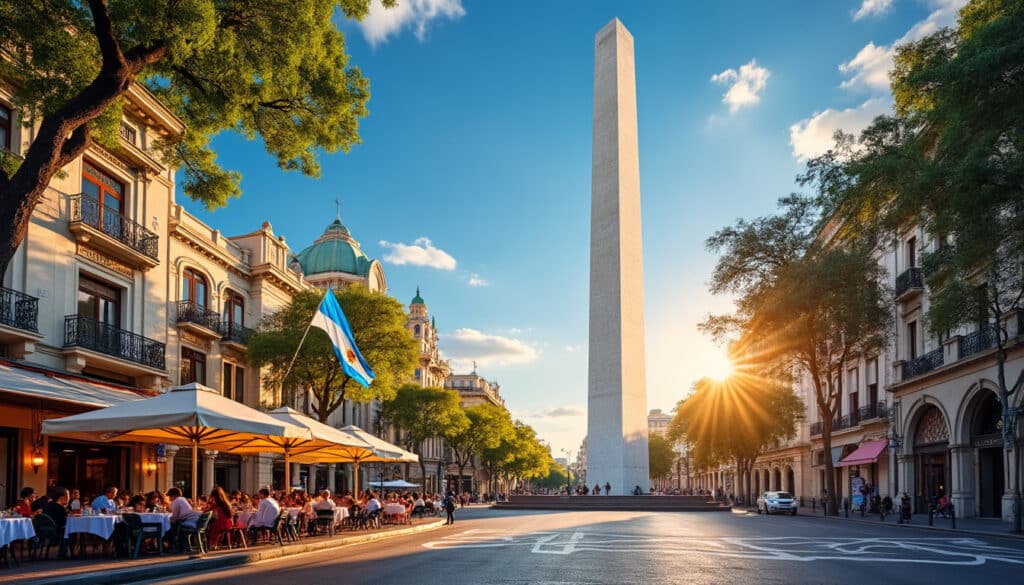
Names, flags, and identity of Buenos Aires
Buenos Aires, often dubbed the “Paris of the South,” is a city where history, culture, and identity intertwine in a dynamic tapestry. Beyond its vibrant streets, alive with the rhythm of tango and the aroma of mate, the identity of…
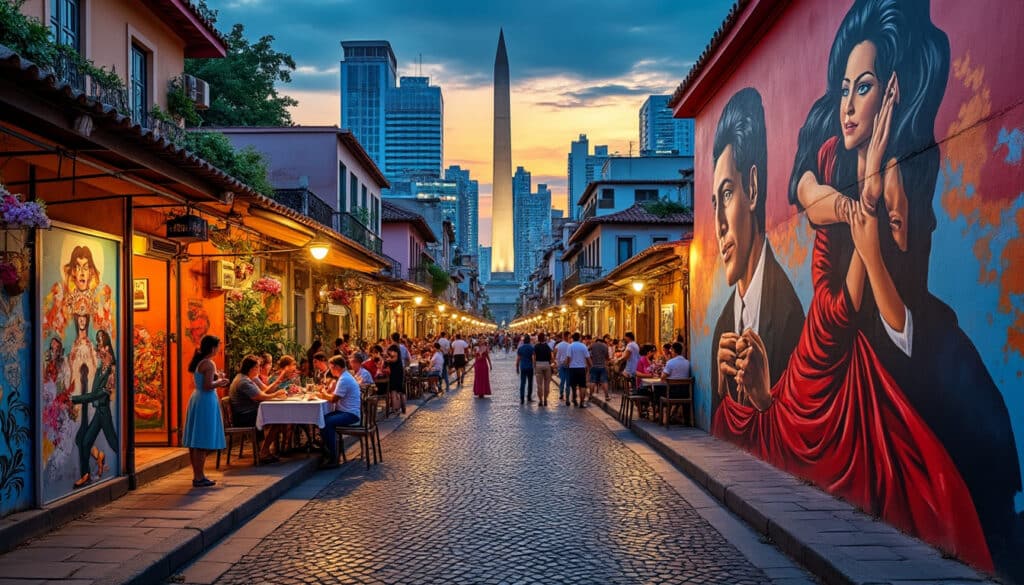
Reputation and identity of Buenos Aires
Buenos Aires, the capital of Argentina, stands as a testament to the rich history and cultural diversity that flow through its vibrant streets. Recognized for its European charm coupled with Latin American flair, the city offers a unique blend of…
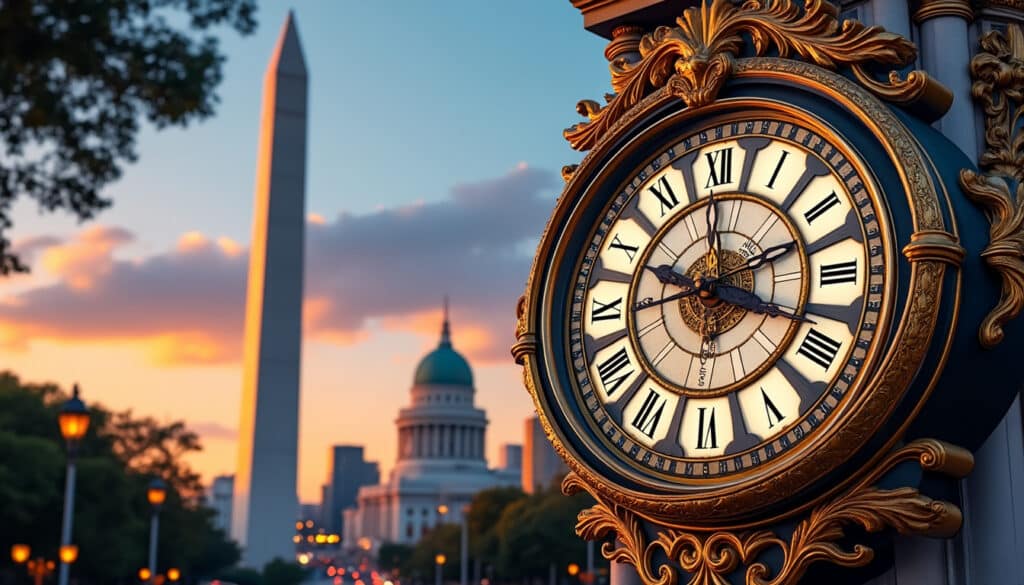
Time and time zone in Buenos Aires
Experience the vibrant ebb and flow of Buenos Aires, where time seems to waltz to the city’s unique rhythm. Understanding Buenos Aires Time is more than just setting your watch; it’s about immersing oneself into the heart of Argentina Time,…
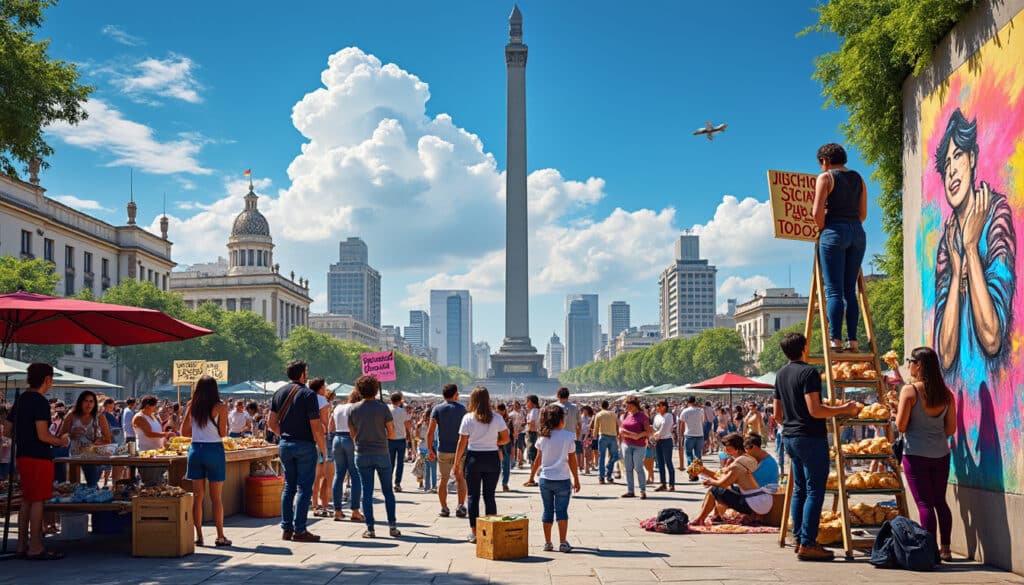
Unusual facts and social issues in Buenos Aires
Buenos Aires, with its captivating blend of old-world charm and dynamic modernity, captivates visitors and residents alike with many intriguing facets and pressing social issues. Behind the tango rhythms and lively street art lies a tapestry of unique cultural characteristics…

What does Buenos Aires look, smell, feel like?
Welcome to a city that dances even when you walk, a place where the rhythm never stops, and the sensation never fades. Buenos Aires, aptly known as the “Paris of South America,” invites you to explore its streets filled with…

